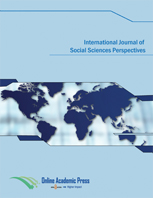Do Industry-Wise Investment Returns Influence the Aggregate Investment Returns of CPSEs in India?
DOI:
https://doi.org/10.33094/ijssp.v10i2.548Keywords:
Invest return, CPSEs, ROA, ROCE, ROE.Abstract
The term “investment return” may be defined as a gauge used to calculate the efficiency or profitability of an investment. It also helps to assess the effectiveness of different investments at a certain point in time. In this context, the focal objective of the study is to examine whether industry-wise investment returns influence aggregate investment returns of Central Public Sector Enterprises (CPSEs) in India during the period 2010-2011 to 2019-2020. The study concerns all the in-service CPSEs in India, aside from public enterprises that run departmentally, indemnity companies, and banking organizations. Moreover, the selected sample is classified into 20 different industries, including 13 industries within the manufacturing sector and 7 industries within the service sector. The findings of the study reveal that few industries positively drive the performance of CPSEs’ aggregate investment returns. Hence, the performance of aggregate CPSEs in terms of investment returns is mainly driven by the performance of COI, OMMI, SI, TVEI, ICGI, PGI, CCTCSI, and FSI. In terms of overall profitability (i.e., ROCE), PGI has the highest positive influence (0.85), while ICGI has the lowest positive influence (0.04) on the overall profitability of the aggregate CPSEs – values which are found to be significant at the 5% level.




